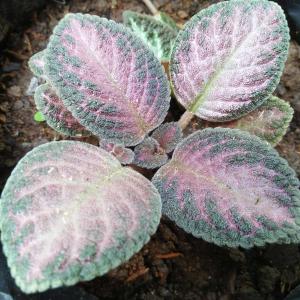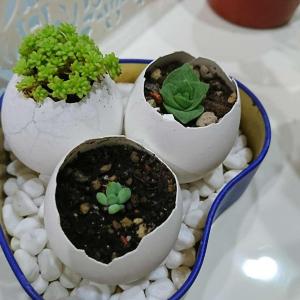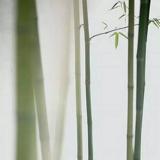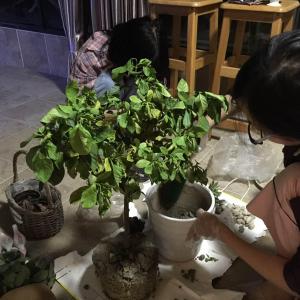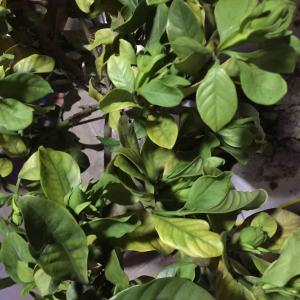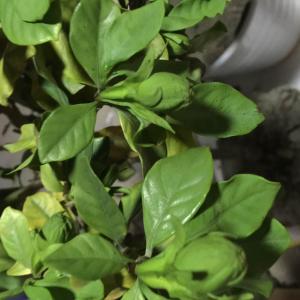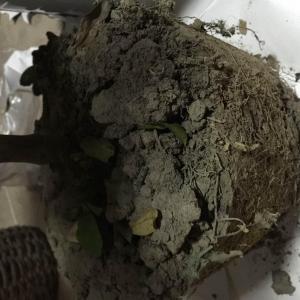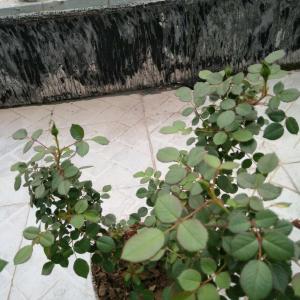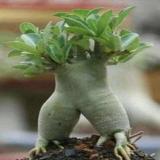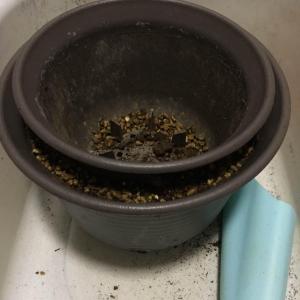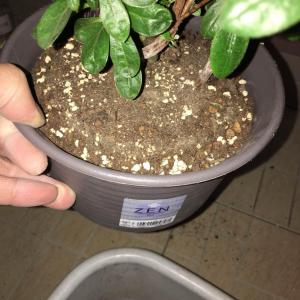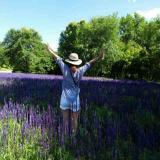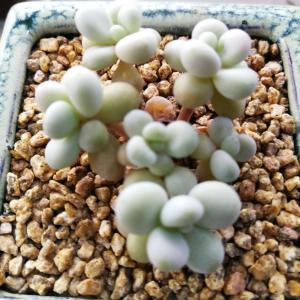文章
Miss Chen
2018年04月06日

Description: This perennial wildflower is 1-5' tall and either unbranched or sparingly so. The central stem is erect, terete, densely hairy or pubescent, and light green to brownish red. The alternate leaves are up to 4" long and 1½" across; they are ovate, narrowly ovate, ovate-lanceolate, or ovate-oblanceolate in shape with crenate-serrate margins. The upper surfaces of the leaves are deeply indented by pinnate veins; this characteristic provides them with a somewhat wrinkled appearance. Additionally, the upper surfaces of the leaves are slightly pubescent to hairless, medium to dark green, and usually dull-colored. The central stem terminates in a panicle of yellow flowerheads of variable shape and size. Small plants often have narrow panicles that resemble racemes, while large plants often have broad panicles with spreading-recurved branches. The upper stems of some large plants may produce panicles that are smaller than that of the central stem.

Each yellow flowerhead spans about 1/8" (3 mm.) across, consisting of 4-8 ray florets and a similar number of tubular disk florets. The base of each flowerhead consists of overlapping scale-like bracts that are yellowish-green. The branches of larger panicles often have small leafy bracts. The blooming period can occur from mid-summer into the fall and lasts about 1-2 months. Each fertile floret is replaced by a small bullet-shaped achene with a short tuft of hairs at its apex. The root system is fibrous and rhizomatous. Vegetative colonies of plants are often formed by the spreading rhizomes.
Cultivation: The preference is full sun to light shade, moist conditions, and soil that is sandy, loamy, or gravelly with a slightly acid pH.
Range & Habitat: The native Wrinkled-Leaved Goldenrod occurs primarily in the southwest corner of Illinois, where it is uncommon. Elsewhere in the state, it is rare or absent (see Distribution Map). Illinois lies at the NW range limit of this species. Habitats include low open woodlands, thickets, sandy swamps, wet sandy prairies, sandy banks of marshes, acid gravelly seeps, sand dunes, and rocky bluffs or cliffs. Usually, this goldenrod is found in moist areas that are sandy or where sandstone is close to the ground surface. Sometimes it is found in gardens, although some cultivars of this species bear little resemblance to the native plants.
Faunal Associations: The nectar and pollen of the flowers attract a wide variety of insects, including small bees, wasps, flies, small butterflies, skippers, and beetles. The caterpillars of many moth species feed on various parts of goldenrods (see Moth Table), while several leaf beetles (Chrysomelidae) feed primarily on the foliage (see Leaf Beetle Table). Other insects that feed on goldenrods include various plant bugs, stink bugs, lace bugs, treehoppers, and leafhoppers; the Bug Table lists some of these species. Insectivorous birds benefit indirectly from goldenrods because of the numerous insects that they attract. Other birds feed directly on goldenrods to a minor extent, including the Indigo Bunting (seeds), Eastern Goldfinch (seeds), Swamp Sparrow (seeds), Ruffed Grouse (leaves), and Greater Prairie Chicken (leaves). White-Tailed Deer and Cottontail Rabbits feed on young foliage to a limited extent, while Meadow Voles eat both the seeds and foliage.
Photographic Location: A sandy bank along a marsh at Jasper-Pulaski Fish and Wildlife Area in northwestern Indiana. The photographed plant is a dwarf (about 1½' tall) that may have been mowed earlier in the year.
Comments: Across it range in the eastern United States, this goldenrod is somewhat variable in appearance. Nonetheless, Wrinkle-Leaved Goldenrod can be distinguished from other goldenrods as follows: 1) the central stem is quite hairy or pubescent, 2) the upper surfaces of the leaves have a wrinkled appearance because of the indentations of their pinnate veins, and 3) individual leaves lack 3 prominent veins that run parallel to each other. This latter characteristic is typical of Solidago canadensis (Canada Goldenrod), Solidago gigantea (Giant Goldenrod), and similar goldenrods. Two other species, Solidago ulmifolia (Elm-Leaved Goldenrod) and Solidago patula (Swamp Goldenrod), have stems that are glabrous or only slightly hairy and their leaves tend to be more thin in texture and shiny than those of Wrinkle-Leaved Goldenrod. Other common names of Solidago rugosa include 'Rough-Stemmed Goldenrod,' 'Rough Goldenrod,' and 'Rough-Leaved Goldenrod.'

Each yellow flowerhead spans about 1/8" (3 mm.) across, consisting of 4-8 ray florets and a similar number of tubular disk florets. The base of each flowerhead consists of overlapping scale-like bracts that are yellowish-green. The branches of larger panicles often have small leafy bracts. The blooming period can occur from mid-summer into the fall and lasts about 1-2 months. Each fertile floret is replaced by a small bullet-shaped achene with a short tuft of hairs at its apex. The root system is fibrous and rhizomatous. Vegetative colonies of plants are often formed by the spreading rhizomes.
Cultivation: The preference is full sun to light shade, moist conditions, and soil that is sandy, loamy, or gravelly with a slightly acid pH.
Range & Habitat: The native Wrinkled-Leaved Goldenrod occurs primarily in the southwest corner of Illinois, where it is uncommon. Elsewhere in the state, it is rare or absent (see Distribution Map). Illinois lies at the NW range limit of this species. Habitats include low open woodlands, thickets, sandy swamps, wet sandy prairies, sandy banks of marshes, acid gravelly seeps, sand dunes, and rocky bluffs or cliffs. Usually, this goldenrod is found in moist areas that are sandy or where sandstone is close to the ground surface. Sometimes it is found in gardens, although some cultivars of this species bear little resemblance to the native plants.
Faunal Associations: The nectar and pollen of the flowers attract a wide variety of insects, including small bees, wasps, flies, small butterflies, skippers, and beetles. The caterpillars of many moth species feed on various parts of goldenrods (see Moth Table), while several leaf beetles (Chrysomelidae) feed primarily on the foliage (see Leaf Beetle Table). Other insects that feed on goldenrods include various plant bugs, stink bugs, lace bugs, treehoppers, and leafhoppers; the Bug Table lists some of these species. Insectivorous birds benefit indirectly from goldenrods because of the numerous insects that they attract. Other birds feed directly on goldenrods to a minor extent, including the Indigo Bunting (seeds), Eastern Goldfinch (seeds), Swamp Sparrow (seeds), Ruffed Grouse (leaves), and Greater Prairie Chicken (leaves). White-Tailed Deer and Cottontail Rabbits feed on young foliage to a limited extent, while Meadow Voles eat both the seeds and foliage.
Photographic Location: A sandy bank along a marsh at Jasper-Pulaski Fish and Wildlife Area in northwestern Indiana. The photographed plant is a dwarf (about 1½' tall) that may have been mowed earlier in the year.
Comments: Across it range in the eastern United States, this goldenrod is somewhat variable in appearance. Nonetheless, Wrinkle-Leaved Goldenrod can be distinguished from other goldenrods as follows: 1) the central stem is quite hairy or pubescent, 2) the upper surfaces of the leaves have a wrinkled appearance because of the indentations of their pinnate veins, and 3) individual leaves lack 3 prominent veins that run parallel to each other. This latter characteristic is typical of Solidago canadensis (Canada Goldenrod), Solidago gigantea (Giant Goldenrod), and similar goldenrods. Two other species, Solidago ulmifolia (Elm-Leaved Goldenrod) and Solidago patula (Swamp Goldenrod), have stems that are glabrous or only slightly hairy and their leaves tend to be more thin in texture and shiny than those of Wrinkle-Leaved Goldenrod. Other common names of Solidago rugosa include 'Rough-Stemmed Goldenrod,' 'Rough Goldenrod,' and 'Rough-Leaved Goldenrod.'
0
0
文章
Miss Chen
2018年04月04日

Description: This perennial herbaceous plant is 3-6' tall, branching occasionally. The stems are light green, terete, and sometimes slightly furrowed; they are covered with spreading hairs. The lower to middle leaves usually have 3-5 deep lobes; they are up to 8" long and 4½" across. The upper leaves usually lack lobes; they are up to 3" long and 1" across. The lobes of the lower to middle leaves are more or less lanceolate in shape and coarsely dentate along their margins; the terminal lobes usually taper to petiole-like bases. The upper leaves are elliptic, lanceolate, or ovate in shape, while their margins are sparsely to moderately dentate. The upper leaf surfaces are medium green and rough-textured from short stiff hairs that are sparsely distributed, while the lower leaf surfaces are light-medium green and hairy, especially along the undersides of major veins. The petioles of alternate leaves are up to 1½" long, becoming shorter as they ascend the stems; the uppermost leaves are often sessile, or nearly so. The petioles are pubescent to hairy.

The upper stems terminate in solitary flowerheads on long peduncles. The peduncles are up to 8" long, light green, terete, and hairy. The daisy-like flowerheads are 2–3½" across, consisting of 10-20 ray florets that surround numerous disk florets. The central disks of the flowerheads are hemispheric in shape; they are fragrant after being crushed. The petaloid rays are bright yellow, narrowly oblong, and slightly notched at their tips; they are widely spreading. The corollas of the disk florets are narrowly tubular in shape and dark reddish purple (at least above). The ray florets are infertile, while the disk florets are fertile. Around the base of each flowerhead, there are many overlapping phyllaries (floral bracts). Individual phyllaries are up to ½" long, light-medium green, linear-lanceolate in shape, and pubescent. The blooming period occurs during mid- to late summer, lasting about 1–1½ months. Afterwards, fertile disk florets are replaced by narrow achenes. These achenes are 2-3 mm. long, dark-colored, and narrow in shape; their apices are truncate, sometimes with minute scales. The root system is fibrous and rhizomatous.

Cultivation: The preference is full or partial sun, moist to mesic conditions, and soil consisting of loam or sandy loam. This plant is relatively easy to cultivate, although it may topple over if it is spoiled by too much water or fertilizer.
Range & Habitat: Sweet Coneflower is occasional in most areas of Illinois, where it is native. It tends to be more common in central and northern Illinois than in the southern section of the state (see Distribution Map). Habitats include black soil prairies, sand prairies, cemetery prairies, typical savannas and sandy savannas, thickets, openings in deciduous woodlands, woodland borders, gravelly seeps, banks of streams, and banks of ditches. This plant is often cultivated in flower gardens, from where it occasionally escapes. Sweet Coneflower is usually found in higher quality natural areas, although it also colonizes disturbed areas. Fidelity to any particular habitat is low.

Faunal Associations: Many kinds of insects visit the flowerheads for either nectar or pollen. These species include little carpenter bees (Ceratina spp.), Epeoline cuckoo bees, digger bees (Melissodes spp., Svastra spp.), leaf-cutting bees (Megachile spp.), Halictid bees, dagger bees (Heterosarus spp.), Sphecid wasps, Vespid wasps, Syrphid flies, bee flies (Bombyliidae), Tachinid flies, small- to medium-sized butterflies, skippers, beetles, and true bugs (Robertson, 1929). Among these species, bees are the most important pollinators. One bee species, Heterosarus rudbeckiae, is an oligolege (specialist pollinator) of Rudbeckia spp. Other insects feed destructively on the foliage, flowerheads, and roots of Sweet Coneflower and other Rudbeckia spp. They include larvae of a leaf-mining fly (Calycomyza frickiana), Asphondylia rudbeckiaeconspicua (Coneflower Gall Midge), Neolasioptera rudbeckiae (Coneflower Stem Midge), larvae of another gall fly (Lestodiplosis rudbeckiae), larvae of a sawfly (Macrophya simillima), and a few aphids (Uroleucon leonardi, Uroleucon rudbeckiae); see Spencer & Steyskal (1986), Felt (1917), Smith (2006), and Blackman & Eastop (2013). The caterpillars of a butterfly, Chlosyne nycteis (Silvery Checkerspot), sometimes feed on Rudbeckia spp. as host plants, as do the caterpillars of such moths as Epiblema carolinana (Gray-blotched Epiblema), Epiblema tandana, Epiblema tripartitana, Eupithecia miserulata (Common Pug), and Synchlora aerata (Wavy-lined Emerald); see Opler & Krizek (1984), Miller (1987), and Wagner (2005).
Photographic Location: The photographs were taken at a prairie garden in Urbana, Illinois.
Comments: Sweet Coneflower (Rudbeckia subtomentosa) is also called Fragrant Coneflower. It is more long-lived than two similar species, Black-eyed Susan (Rudbeckia hirta) and Brown-eyed Susan (Rudbeckia triloba). Compared to the Black-eyed Susan, Sweet Coneflower is a taller plant with many deeply lobed leaves. The leaves of Black-eyed Susan lack lobes. Compared to Brown-eyed Susan, the flowerheads of Sweet Coneflower are larger in size with longer and more abundant petaloid rays. Otherwise they are quite similar to each other in appearance. Another species, Orange Coneflower (Rudbeckia fulgida), also lacks lobes on its leaves and it is a shorter plant. All of these species are native to Illinois and they sometimes share the same habitats.

The upper stems terminate in solitary flowerheads on long peduncles. The peduncles are up to 8" long, light green, terete, and hairy. The daisy-like flowerheads are 2–3½" across, consisting of 10-20 ray florets that surround numerous disk florets. The central disks of the flowerheads are hemispheric in shape; they are fragrant after being crushed. The petaloid rays are bright yellow, narrowly oblong, and slightly notched at their tips; they are widely spreading. The corollas of the disk florets are narrowly tubular in shape and dark reddish purple (at least above). The ray florets are infertile, while the disk florets are fertile. Around the base of each flowerhead, there are many overlapping phyllaries (floral bracts). Individual phyllaries are up to ½" long, light-medium green, linear-lanceolate in shape, and pubescent. The blooming period occurs during mid- to late summer, lasting about 1–1½ months. Afterwards, fertile disk florets are replaced by narrow achenes. These achenes are 2-3 mm. long, dark-colored, and narrow in shape; their apices are truncate, sometimes with minute scales. The root system is fibrous and rhizomatous.

Cultivation: The preference is full or partial sun, moist to mesic conditions, and soil consisting of loam or sandy loam. This plant is relatively easy to cultivate, although it may topple over if it is spoiled by too much water or fertilizer.
Range & Habitat: Sweet Coneflower is occasional in most areas of Illinois, where it is native. It tends to be more common in central and northern Illinois than in the southern section of the state (see Distribution Map). Habitats include black soil prairies, sand prairies, cemetery prairies, typical savannas and sandy savannas, thickets, openings in deciduous woodlands, woodland borders, gravelly seeps, banks of streams, and banks of ditches. This plant is often cultivated in flower gardens, from where it occasionally escapes. Sweet Coneflower is usually found in higher quality natural areas, although it also colonizes disturbed areas. Fidelity to any particular habitat is low.

Faunal Associations: Many kinds of insects visit the flowerheads for either nectar or pollen. These species include little carpenter bees (Ceratina spp.), Epeoline cuckoo bees, digger bees (Melissodes spp., Svastra spp.), leaf-cutting bees (Megachile spp.), Halictid bees, dagger bees (Heterosarus spp.), Sphecid wasps, Vespid wasps, Syrphid flies, bee flies (Bombyliidae), Tachinid flies, small- to medium-sized butterflies, skippers, beetles, and true bugs (Robertson, 1929). Among these species, bees are the most important pollinators. One bee species, Heterosarus rudbeckiae, is an oligolege (specialist pollinator) of Rudbeckia spp. Other insects feed destructively on the foliage, flowerheads, and roots of Sweet Coneflower and other Rudbeckia spp. They include larvae of a leaf-mining fly (Calycomyza frickiana), Asphondylia rudbeckiaeconspicua (Coneflower Gall Midge), Neolasioptera rudbeckiae (Coneflower Stem Midge), larvae of another gall fly (Lestodiplosis rudbeckiae), larvae of a sawfly (Macrophya simillima), and a few aphids (Uroleucon leonardi, Uroleucon rudbeckiae); see Spencer & Steyskal (1986), Felt (1917), Smith (2006), and Blackman & Eastop (2013). The caterpillars of a butterfly, Chlosyne nycteis (Silvery Checkerspot), sometimes feed on Rudbeckia spp. as host plants, as do the caterpillars of such moths as Epiblema carolinana (Gray-blotched Epiblema), Epiblema tandana, Epiblema tripartitana, Eupithecia miserulata (Common Pug), and Synchlora aerata (Wavy-lined Emerald); see Opler & Krizek (1984), Miller (1987), and Wagner (2005).
Photographic Location: The photographs were taken at a prairie garden in Urbana, Illinois.
Comments: Sweet Coneflower (Rudbeckia subtomentosa) is also called Fragrant Coneflower. It is more long-lived than two similar species, Black-eyed Susan (Rudbeckia hirta) and Brown-eyed Susan (Rudbeckia triloba). Compared to the Black-eyed Susan, Sweet Coneflower is a taller plant with many deeply lobed leaves. The leaves of Black-eyed Susan lack lobes. Compared to Brown-eyed Susan, the flowerheads of Sweet Coneflower are larger in size with longer and more abundant petaloid rays. Otherwise they are quite similar to each other in appearance. Another species, Orange Coneflower (Rudbeckia fulgida), also lacks lobes on its leaves and it is a shorter plant. All of these species are native to Illinois and they sometimes share the same habitats.
0
0
文章
Miss Chen
2018年04月03日

Description: This perennial shrub is 2-5' tall, forming arching woody canes. First-year canes produce leaves that are palmately compound (usually 5 leaflets), while second-year canes produce trifoliate leaves (3 leaflets). First-year canes are infertile, while second-year canes bear flowers and fruit. The latter die down after bearing fruit, but they often start new canes vegetatively when their tips touch the ground. Young canes are light green, stout, and rather angular, but they later become red, reddish brown, or black. Stout prickles occur along the sides of the canes; these prickles are usually curved, rather than straight.

The compound leaves of first-year canes span up to 6" long and 6" across (excluding their petioles). The terminal leaflet is larger than the lateral leaflets; it is up to 3" long and 2½" across (less than twice as long as its width). Each terminal leaflet is ovate to oval in shape, rounded or cordate at the base, and coarsely serrated along its margins; the lateral leaflets are similar, except they are more slender in shape. At the base of each terminal leaflet, there is a conspicuous basal stalklet (petiolule) about ½" long, while the lateral leaflets are sessile, or nearly so. On the upper surface, each leaflet is medium green and either hairless or sparsely hairy; on the lower surface, each leaflet is light green and finely pubescent, especially along the veins. The petioles of the compound leaves are up to 4" long, pale green, and either hairless or sparsely pubescent; there are often 1-2 tiny curved prickles along the length of each petiole. The leaflets of second-year canes are slightly smaller in size than those of the first-year canes, and their terminal leaflets are more slender than the terminal leaflets of the latter. Otherwise, the leafletsPrickly Cane of both types of canes are very similar to each other. Second-year canes bear short corymbs of flowers spanning about 2-4" across. Each flower is about 1" across, consisting of 5 white petals, 5 light green sepals, a cluster of light green pistils, and numerous stamens. The petals are oblanceolate in shape and rather wrinkled in appearance; they are much longer than the slightly pubescent sepals. At the base of the pedicel of each flower, there is either a stipule-like or leafy bract of varying size; the flowers are often partially hidden by these bracts. The blooming period of this blackberry occurs during late spring to early summer, lasting about 3 weeks. The flowers are replaced by a juicy fruits (compound drupes) that are globoid-ovoid in shape and up to ¾" long. The fruits become black at maturity during mid- to late summer; they have a pleasant sweet-tart flavor, sometimes with a slightly bitter aftertaste. Each drupelet within a fruit contains a single seed. The root system is woody and branching. Loose colonies of plants are often formed from vegetative propagation of the canes.
Cultivation: The preference is full or partial sun, moist to dry-mesic conditions, and soil containing loam, clay-loam, or some rocky material. The size of the fruit is strongly influenced by the amount of precipitation during the first half of summer.
Range & Habitat: The native Pennsylvania Blackberry is fairly common and it can be found throughout Illinois (see Distribution Map). Habitats include woodland openings, woodland edges, savannas, thickets, weedy meadows, and fence rows. This shrub is typically found in areas with a history of disturbance, although it is intolerant of regular mowing.
Faunal Associations: This species and other blackberries (Rubus spp.) are important to many kinds of wildlife. The nectar and pollen of the flowers attract many kinds of insects, including long-tongued and short-tongued bees, wasps, bee flies, butterflies, and skippers. The larvae of many moths feed on the leaves and flowers, or bore through the canes (see Moth Table). Other insects that feed on various parts of blackberries include several leaf beetles, larvae of long-horned beetles, stinkbugs, aphids, sawfly larvae, and others (see Insect Table). The fruit is an important source of food to many songbirds and upland gamebirds (see Bird Table). Many mammals feed on the fruit of blackberries as well, including the Deer Mouse, White-Footed Mouse, Jumping Mouse, Eastern Chipmunk, Fox Squirrel, Gray Squirrel, Red Squirrel, Red Fox, Raccoon, Striped Skunk, and Black Bear. White-Tailed Deer and Cottontail Rabbits feed on the leaves and twigs. The prickly canes and leaves of blackberries also provide protective cover for small mammals and birds.

Compound Leaf of 1st Year Cane
Comments: The different species of blackberry (Rubus spp.) can be difficult to identify and different authorities don't always agree on their taxonomic classification. Pennsylvania Blackberry can be distinguished from other blackberry species by one or more of the following characteristics: 1) its terminal leaflets are no more than twice as long as they are across, 2) the hairs on its flowering corymbs are non-glandular, rather than glandular, 3) its corymbs of flowers are short and often partially hidden by leafy bracts, and 4) at least some of its floral bracts are large and leafy, rather than small and stipule-like. Compared to Rubus spp. that are raspberries, Pennsylvania Blackberry usually has larger flowers (about 1" across) and its compound drupes do not detach cleanly from their receptacles. Some taxonomists (e.g., Mohlenbrock, 2002) divide Pennsylvania Blackberry into two species: Rubus pensilvanicus and Rubus frondosus (Leafy-Flowered Blackberry). According to this taxonomic classification, the floral bracts of Leafy-Flowered Blackberry are all relatively large and leafy in appearance, whereas Pennsylvania Blackberry has a mixture of small stipule-like bracts and larger leafy bracts in its corymbs. In addition, the terminal leaflets of sterile canes are rounded at their bases for Pennsylvania Blackberry, whereas for Leafy-Bracted Blackberry they have cordate (indented) bases. However, in the field, it is not uncommon to encounter shrubs that display mixed characteristics. As a result, Leafy-Flowered Blackberry can be considered a variant of Pennsylvania Blackberry (or vice versa).

The compound leaves of first-year canes span up to 6" long and 6" across (excluding their petioles). The terminal leaflet is larger than the lateral leaflets; it is up to 3" long and 2½" across (less than twice as long as its width). Each terminal leaflet is ovate to oval in shape, rounded or cordate at the base, and coarsely serrated along its margins; the lateral leaflets are similar, except they are more slender in shape. At the base of each terminal leaflet, there is a conspicuous basal stalklet (petiolule) about ½" long, while the lateral leaflets are sessile, or nearly so. On the upper surface, each leaflet is medium green and either hairless or sparsely hairy; on the lower surface, each leaflet is light green and finely pubescent, especially along the veins. The petioles of the compound leaves are up to 4" long, pale green, and either hairless or sparsely pubescent; there are often 1-2 tiny curved prickles along the length of each petiole. The leaflets of second-year canes are slightly smaller in size than those of the first-year canes, and their terminal leaflets are more slender than the terminal leaflets of the latter. Otherwise, the leafletsPrickly Cane of both types of canes are very similar to each other. Second-year canes bear short corymbs of flowers spanning about 2-4" across. Each flower is about 1" across, consisting of 5 white petals, 5 light green sepals, a cluster of light green pistils, and numerous stamens. The petals are oblanceolate in shape and rather wrinkled in appearance; they are much longer than the slightly pubescent sepals. At the base of the pedicel of each flower, there is either a stipule-like or leafy bract of varying size; the flowers are often partially hidden by these bracts. The blooming period of this blackberry occurs during late spring to early summer, lasting about 3 weeks. The flowers are replaced by a juicy fruits (compound drupes) that are globoid-ovoid in shape and up to ¾" long. The fruits become black at maturity during mid- to late summer; they have a pleasant sweet-tart flavor, sometimes with a slightly bitter aftertaste. Each drupelet within a fruit contains a single seed. The root system is woody and branching. Loose colonies of plants are often formed from vegetative propagation of the canes.
Cultivation: The preference is full or partial sun, moist to dry-mesic conditions, and soil containing loam, clay-loam, or some rocky material. The size of the fruit is strongly influenced by the amount of precipitation during the first half of summer.
Range & Habitat: The native Pennsylvania Blackberry is fairly common and it can be found throughout Illinois (see Distribution Map). Habitats include woodland openings, woodland edges, savannas, thickets, weedy meadows, and fence rows. This shrub is typically found in areas with a history of disturbance, although it is intolerant of regular mowing.
Faunal Associations: This species and other blackberries (Rubus spp.) are important to many kinds of wildlife. The nectar and pollen of the flowers attract many kinds of insects, including long-tongued and short-tongued bees, wasps, bee flies, butterflies, and skippers. The larvae of many moths feed on the leaves and flowers, or bore through the canes (see Moth Table). Other insects that feed on various parts of blackberries include several leaf beetles, larvae of long-horned beetles, stinkbugs, aphids, sawfly larvae, and others (see Insect Table). The fruit is an important source of food to many songbirds and upland gamebirds (see Bird Table). Many mammals feed on the fruit of blackberries as well, including the Deer Mouse, White-Footed Mouse, Jumping Mouse, Eastern Chipmunk, Fox Squirrel, Gray Squirrel, Red Squirrel, Red Fox, Raccoon, Striped Skunk, and Black Bear. White-Tailed Deer and Cottontail Rabbits feed on the leaves and twigs. The prickly canes and leaves of blackberries also provide protective cover for small mammals and birds.

Compound Leaf of 1st Year Cane
Comments: The different species of blackberry (Rubus spp.) can be difficult to identify and different authorities don't always agree on their taxonomic classification. Pennsylvania Blackberry can be distinguished from other blackberry species by one or more of the following characteristics: 1) its terminal leaflets are no more than twice as long as they are across, 2) the hairs on its flowering corymbs are non-glandular, rather than glandular, 3) its corymbs of flowers are short and often partially hidden by leafy bracts, and 4) at least some of its floral bracts are large and leafy, rather than small and stipule-like. Compared to Rubus spp. that are raspberries, Pennsylvania Blackberry usually has larger flowers (about 1" across) and its compound drupes do not detach cleanly from their receptacles. Some taxonomists (e.g., Mohlenbrock, 2002) divide Pennsylvania Blackberry into two species: Rubus pensilvanicus and Rubus frondosus (Leafy-Flowered Blackberry). According to this taxonomic classification, the floral bracts of Leafy-Flowered Blackberry are all relatively large and leafy in appearance, whereas Pennsylvania Blackberry has a mixture of small stipule-like bracts and larger leafy bracts in its corymbs. In addition, the terminal leaflets of sterile canes are rounded at their bases for Pennsylvania Blackberry, whereas for Leafy-Bracted Blackberry they have cordate (indented) bases. However, in the field, it is not uncommon to encounter shrubs that display mixed characteristics. As a result, Leafy-Flowered Blackberry can be considered a variant of Pennsylvania Blackberry (or vice versa).
0
0




